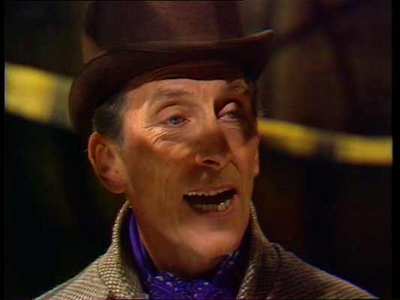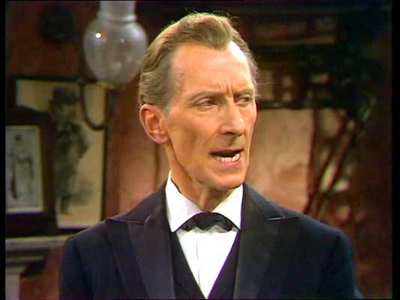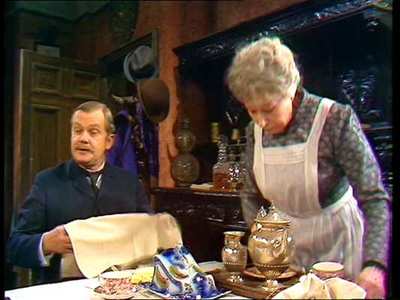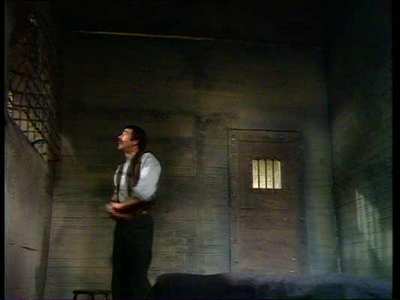Review of Sherlock Holmes: The Sign Of Four / The Blue Carbuncle
Introduction
Sixteen fifty-minute episodes (including the two-part "Hound of the Baskervilles") were completed. Remarkably for a show made by the BBC in 1968, the series was videotaped in colour. Typically for a videotaped show however, it was largely studio-bound, with limited filmed inserts of location and effects material.
For some reason only five episodes of this grand 1960s series survive - Hound of the Baskervilles, The Sign Of Four, The Blue Carbuncle, The Boscombe Valley Mystery and Study In Scarlet. Peter Cushing`s performance as Holmes is among his best, and Nigel Stock`s redoubtable Dr Watson stands alongside the performances of Nigel Bruce as the definitive version of the great detective`s sidekick. The BBC is releasing the five surviving episodes as three DVDs, and at a bargain price. While they don`t have the sheer style of Jeremy Brett`s definitive Holmes adventures, these programmes demonstrate what the BBC could achieve within the confines of Television Centre. They literally don`t make drama like this anymore.
This disc consists of "The Sign of Four" and "The Blue Carbuncle". "The Sign Of Four", dramatised by Michael and Mollie Hardwick features Paul Daneman and John Stratton. Daneman plays two parts (one of them extremely dead) in this extremely atmospheric episode. "The Blue Carbuncle" sets Holmes on the trail of the blue gem (not a physiological excrescence). Dad`s Army regular James Beck appears as well as On The Buses regular Michael Robbins.

Video
Presented in the original 4:3, the series has survived the passage of time relatively well. Contrast is quite high and harsh, which may be a video generational issue. There are a number of brief videotape artefacts, but considering the age of the source material it may be a miracle the image is in such good shape.
The changes of image quality between studio and filmed insert can be quite jarring. Doctor Who aficionadoes will be quite familiar with this sort of thing.

Audio
The original mono soundtrack is reproduced in Dolby 2.0 Mono.

Features
Apart from subtitles, nothing.

Conclusion
In 1968, the Great Detective and his chronicler were brought to the small screen by Peter Cushing and Nigel Stock. "Sir Arthur Conan Doyle`s Sherlock Holmes" was intended to be one of the BBC`s showcase series. It was to be a sequel to the highly successful 1964 series of "Sherlock Holmes" which had starred Douglas Wilmer as Holmes and Nigel Stock as Watson. When Wilmer (and second choice John Neville) proved unavailable for the new series, the BBC turned to master of screen scares Peter Cushing to take up the violin and meerschaum. Cushing had played Holmes before, most notably in the 1959 Hammer rendition of "Hound of the Baskervilles". For a degree of continuity, Nigel Stock stayed on as Watson. The result was a series that came under considerable flak at the time for its violent content.
While Jeremy Brett`s Holmes series for Granada was possibly the definitive television version of the Great Detective`s adventures, the five surviving adventures of this series are classics. Cherish them.
Your Opinions and Comments
Be the first to post a comment!